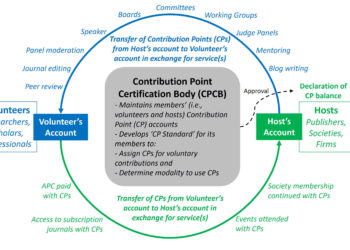
I am a fortunate reader of Simba’s latest report, Global Scientific and Technical Publishing, 2013-2014, which sets out to describe the scientific and technical publishing marketplace as it actually is. Reporting on what it should be or will be is another matter; and describing scientific and technical publishing as though they are abstract entities in a gothic novel (Oh! The ogre of Elsevier! The vampires of John Wiley!) is a matter best left to people with far greater imagination than mine. Scientific and technical publishing is a business. It’s a good business, but it’s not a growth business. Nonetheless, its practitioners are seeking growth just about everywhere, and some of those areas under investigation come through in this report.
Simba previously released its report on medical publishing, which I wrote about here. The new report is on the “S” and “T’ of STM. I realized in reading the new report that it is making less and less sense to lump all of STM together, as the dynamics of each segment increasingly differ. Medical publishing, for example, continues to look backward to print editions because its advertising base is reluctant to migrate to digital media. Scientific publishers, on the other hand, have no such constraint, and more and more publishers are contemplating digital-only publications. “S” and “T” publishers are also much more reliant on library subscriptions, which is to say that they have to wrestle with the library funding problem. Virtually everything they do is a response to that problem.
Some numbers: “The global scientific and technical publishing market saw flat total sales in 2012, up only 0.2% to $10.7 billion. From 2010 to 2012, the market grew at a compound rate of 2.3%.” Journals are the biggest piece of this market ($4.6 billion), and Elsevier, no surprise, is the biggest scientific publisher of all, with a market share about equal to the next 3 companies combined (Thomson Reuters, Springer, Wiley). Print books continue to decline sharply–again, no surprise. Ebooks are rising rapidly, but not fast enough (yet) to offset the decline of print.
There are some surprises here, however, at least to me. For example, Scopus indexes scientific and technical material in 40 languages–the “taken for granted” dominance of English suddenly does not seem so assured. There is growth in parts of the world (Brazil, China, India) which could undermine the American imperial moment. Sitting here in the New York area I suddenly don’t feel quite as confident that I am at the center of things. Indeed, what is most unsettling is the sense that there is no center.
While the real strength of a market research study of this kind is in the company-by-company sections, I was particularly intrigued by the summary of acquisitions, many of which slipped by during the year without my noticing them. Most of these acquisitions are not simply attempts to hoover up more content, which was for many years the standard rationale of an academic publisher. The way that worked was that a publisher already had infrastructure in place to serve an established market (for STM that would largely be academic libraries), and buying another company with more content to sell to that market meant both increased sales and reduced expenses (because, for example, you don’t need two library sales forces). But many of the acquisitions cited in this report are of a different sort. In some instances they open up entirely new sales channels, in others (e.g., Mendeley) they seem to be part of a strategy to cement a publisher’s position with existing channels. If that speculation is true about Mendeley, then Elsevier, as the market leader, had much more to gain by acquiring Mendeley than anyone else because Elsevier has more to “cement.”
The report goes beyond amassing market data and identifies key trends, with speculation about their implications. The trend for large aggregations to get bigger is clear. One implication is that the identity of the journal gets lost in the overall aggregation. So where we used to have articles and journals, increasingly we now have or may come to have articles and aggregations. This is one of the tradeoffs that small publishers that partner with large publishers have to accept: the large publishers provide marketing clout, but at the expense of the small publisher’s brand.
No trend looms larger than open access, of course, but this is where the world as it is and the world that may be or that some hope will be are at odds. Although Simba does not put a dollar value on OA publishing, elsewhere I have seen figures that suggest that OA revenues are under 3% of the total market. (That may be for the entire STM market, not just the “S” and “T” chunks.) How is 3% dominating all the conversation? Of course, OA can’t be entirely evaluated in dollar terms; indeed, one of the points of OA is to shrink the market–so if the $10 billion market surveyed here can be knocked down to $100 million, what’s not to like? But shrinkage is not happening either; essentially we have a flat market. OA, in other words, is essentially additive to the traditional market. It’s also in part being absorbed into the operations of the established publishers–with some very significant exceptions (e.g., PLoS, Hindawi).
That’s the next report I would like to see, a study of the OA marketplace. Such a report would capture the revenue of the “pure play” OA services such as PLoS and add to that the figures for OA programs at Wiley, Springer, etc. I would also like to see a paper that helps me understand how much cost and value library OA repositories have. In the meantime we have to be content to have good data on the market that is.
Discussion
10 Thoughts on "A Snapshot of the Scientific and Technical Publishing Market"
Thanks for this interesting piece of work.
Just a remark though: if overall market is flat, with OA fast growing, it actually means that OA “shrinks” the “traditional” market!
Thanks for this useful summary of of a $2500 report that would otherwise be quite beyond the reach of nearly everyone.
I hardly summarized the report. I quoted a couple sentences. The report is dense with figures and strategic insights. The price of the report is chump change to the audience for which it is intended, namely, publishing companies and industry analysts with financial firms. They can make millions on this information. Preparing a report of this kind costs a small fortune. I used to do this work in the chemical industry, where some reports had costs over a million dollars and for which there were perhaps a dozen customers.
Joe, I assume by OA you here mean APC gold OA, which is a business model. Mandated green OA is a major regulatory issue and that is why it gets so much attention. For that matter what you call flat others see as stable, in the context that mandated OA might destabilize the market, with serious adverse impacts. Stability and survival take priority over growth. This is an industry under regulatory threat.
For current information on some of the major OA players see:
http://dx.doi.org/10.6084/m9.figshare.650799
Also Pete Binfield has gathered very comprehensive data on “mega journals”.
Open Access MegaJournals – Have They Changed Everything? Blog post by Peter Binfield. Blog post on the Creative Commons Aotearoa New Zealand Web site. 23 OCTOBER 2013 http://creativecommons.org.nz/
Together they should give you a pretty good start for your next post.
The hybrid market and the new fully OA journals published by the major subscription publishers that seem to be popping up like mushrooms in 2013 don’t account for many articles or I suspect revenue but perhaps they will in the future.
I appreciate having an opportunity to read a few of the key points made in the report. It might be a worthy investment.


